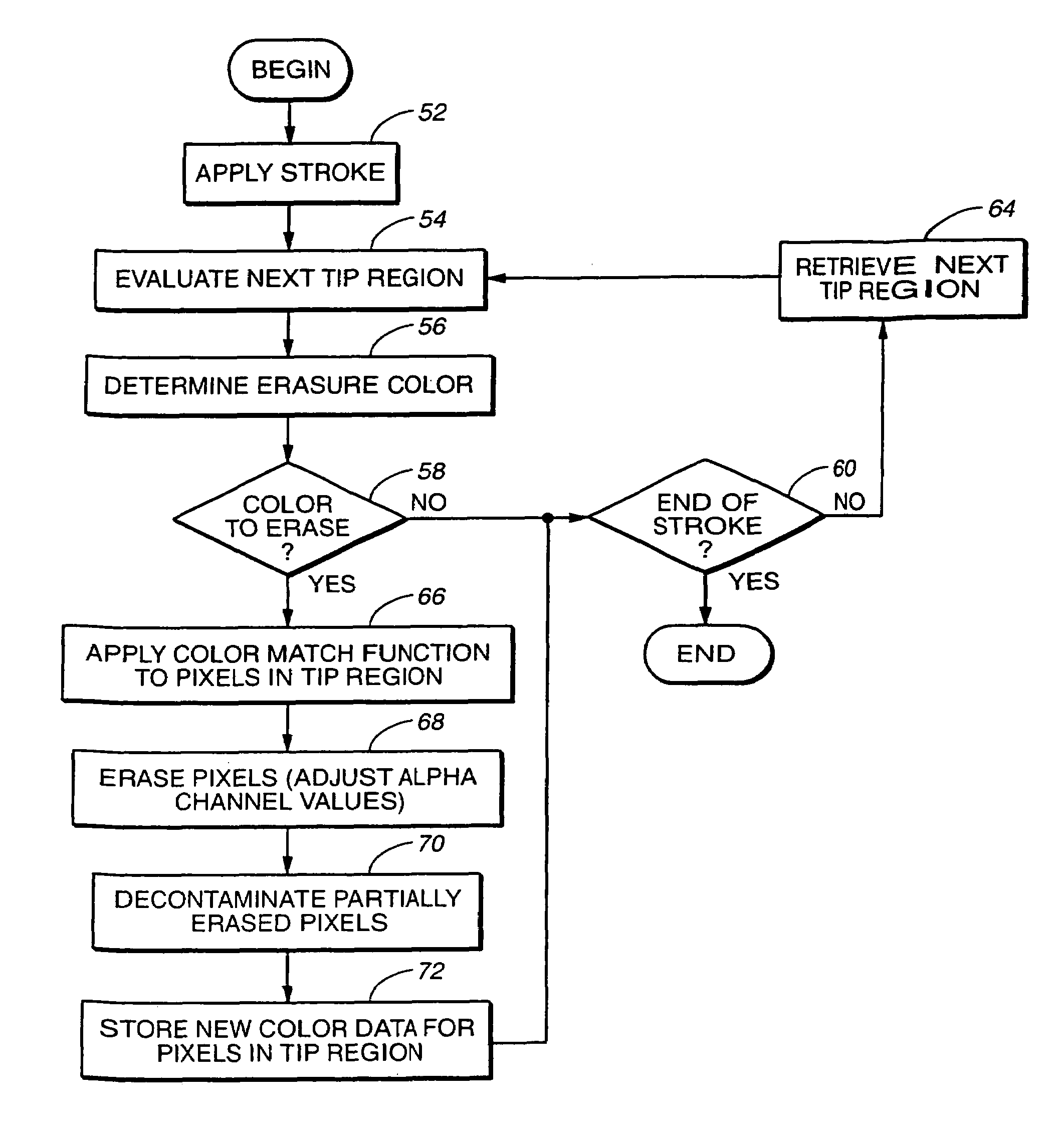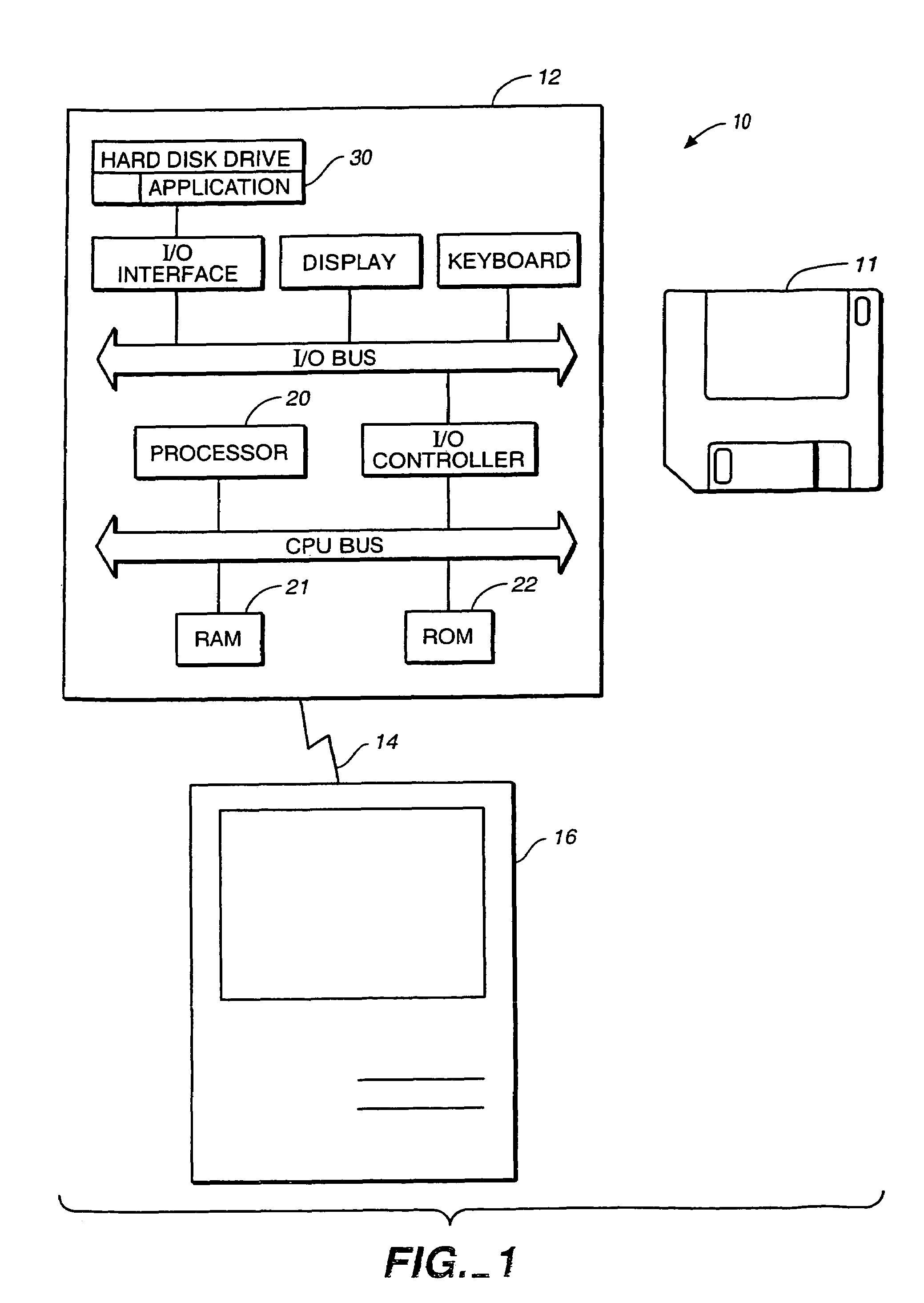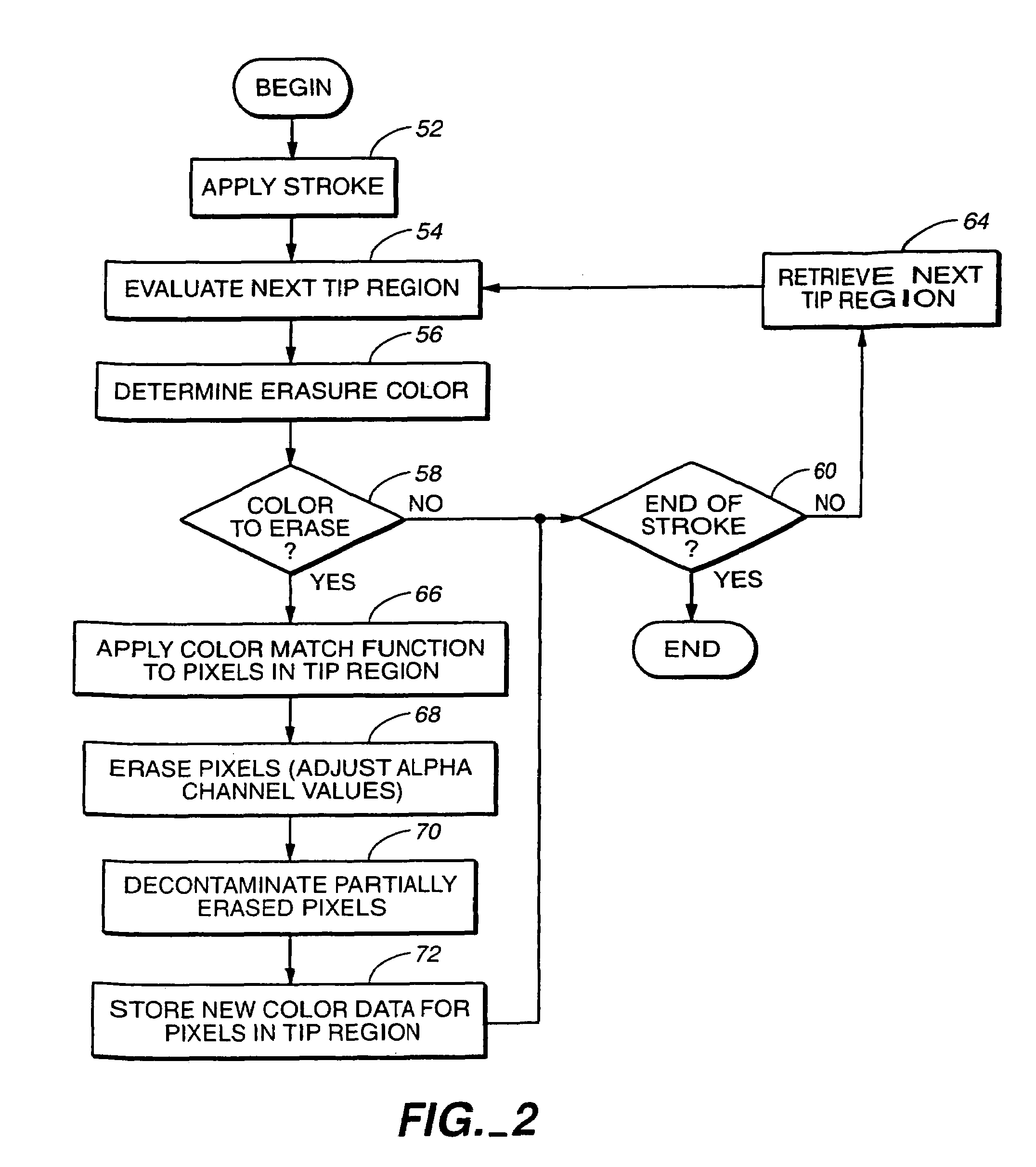Smart erasure brush
a brush and brush body technology, applied in the field of smart brushing, can solve the problems of difficult removal process, difficult removal of objects, and difficulty in only one region
- Summary
- Abstract
- Description
- Claims
- Application Information
AI Technical Summary
Benefits of technology
Problems solved by technology
Method used
Image
Examples
Embodiment Construction
[0035]It is common for one working with digital images to erase objects from the image. The user selects an object to remove from a scene by outlining its boundary. However, this outline covers pixels whose origins are difficult to ascertain (are they a portion of the foreground or background, part of the desired feature or not). The present invention provides a solution to this problem that includes erasing pixels whose origins are uncertain and simultaneously extracting background color data from the erased pixels.
[0036]A number of terms are used herein to describe images and related structures. “Digital image,” is used to refer to a collection of digital information that may be cast into the form of an image. The term image is used to describe a type of visual representation or object type. Digital images may include photographs, artwork, documents, and web pages, for example. Images may be obtained from digital cameras, digital video, scanners, and facsimile devices, for example...
PUM
 Login to View More
Login to View More Abstract
Description
Claims
Application Information
 Login to View More
Login to View More - R&D
- Intellectual Property
- Life Sciences
- Materials
- Tech Scout
- Unparalleled Data Quality
- Higher Quality Content
- 60% Fewer Hallucinations
Browse by: Latest US Patents, China's latest patents, Technical Efficacy Thesaurus, Application Domain, Technology Topic, Popular Technical Reports.
© 2025 PatSnap. All rights reserved.Legal|Privacy policy|Modern Slavery Act Transparency Statement|Sitemap|About US| Contact US: help@patsnap.com



